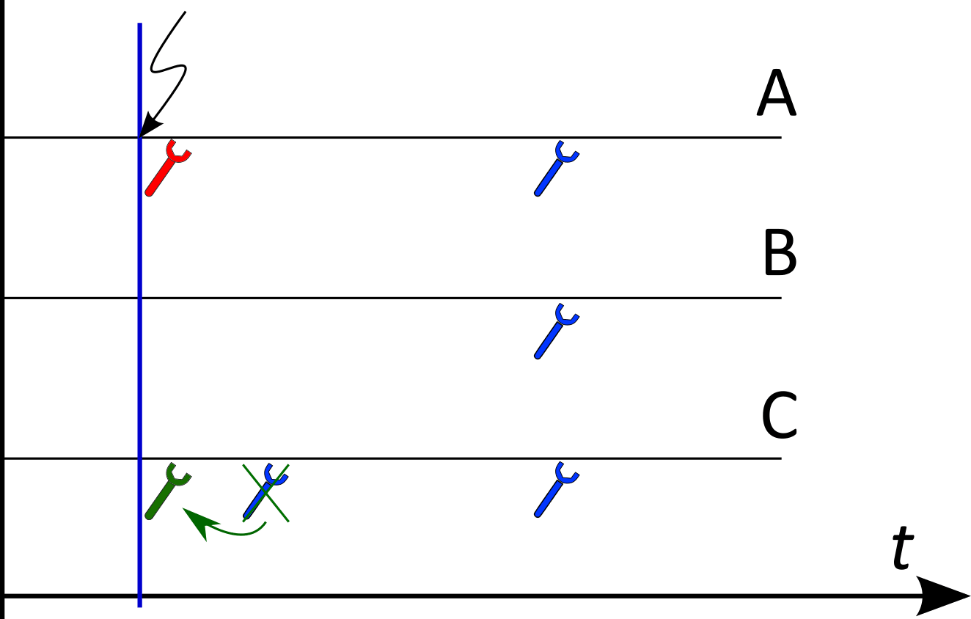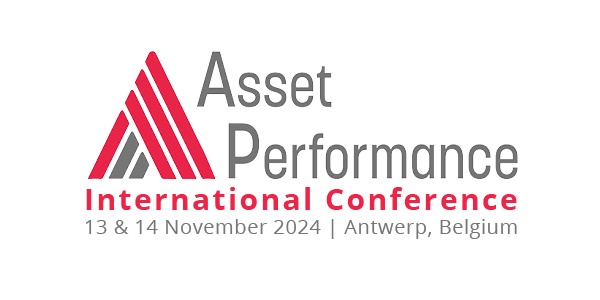Opportunistic Maintenance: A Newer Name to Good Practice
In the realm of maintenance policies, opportunistic maintenance may sound like an outsider. Indeed, recently, looks have been focused on Reliability-Centered Maintenance (RCM), Total Productive Maintenance (TPM) and predictive maintenance or even prescriptive 4.0 maintenance as most up-to-date common good practice, but it would be a mistake to overlook the benefits of opportunistic maintenance. Good news: implementing opportunistic maintenance is perfectly compatible with these policies under certain conditions. The principle is of the simplest: consider each asset stoppage as an opportunity for preventive maintenance, and make value out of the production interruption by performing preventive maintenance actions during the system stoppage.
Economic dependence
Opportunistic maintenance is most valuable in multi-unit systems with an economic dependence. Can my system be divided into subcomponents that have specific preventive maintenance actions? Could the simultaneous maintenance of subcomponents be less costly than each individual action? If the answer to both questions is yes, opportunistic maintenance is beneficial to the system.
Take for example a wind turbine, and simplistically divide the system into three subsystems: the wind turbine orientation system, the blade orientation system, and the generator. Each subsystem has its own specific maintenance actions that are not necessarily identical one to another. Then, a failure in the generator would induce a long repair time. A well-advised maintenance manager could take advantage of this stoppage to perform upcoming preventive maintenance actions on the other subsystems, hence saving an additional production loss that would have occurred soon otherwise. The opportunistic maintenance hence takes advantage of the unavailability of a system to get a head start on preventive maintenance of other subcomponents, in order to save the cost of future production interruptions.
Practical to implement
Obviously, opportunistic actions are not undertaken at random upon a system stoppage. A criterion is to be used, to decide which, if any, subcomponents are to be maintained on a given stoppage. Most often, the reliability estimate at the time is used as the criterion for opportunistic maintenance. This is most practical in the framework of a functioning RCM policy, at a stage when the reliability parameters of subcomponents are well known, but as a first approach, the time since last failure might also be considered. Other criteria include time to next scheduled maintenance, health indicators, quality indicators [1], etc.

At the time of opportunity, i.e., upon a failure or a planned maintenance, the subcomponents are sorted according to the decided criterion, e.g., in ascending reliability order, for example. All subcomponents that are below a reliability threshold should then be considered for opportunistic maintenance at the time.
If regular maintenance workforce is unavailable at the time, contractors may be considered, if possible, and economically feasible. This possibility, if the costs are known in advance, can also be considered at the time of optimizing the maintenance policy.
A fine-tuning that may take some time
The optimization of an opportunistic maintenance policy has its complexities. It is still an open research subject, but the general principle is well known and has been for years. The objective of this optimization is to determine the threshold at which opportunistic maintenance should be applied. Values depend strongly on the maintenance costs, as well as production interruption costs. The workforce costs are not to be neglected either. Typical cases with typical values show interest for opportunistic maintenance whenever the reliability of a subcomponent is below 80%, but the real value is a case-by-case optimization based on the nature of the studied system.
Most often, the optimization of the policy is based on a Monte Carlo simulation for long-term assessment of the maintenance policy, coupled with a genetic algorithm for the optimization itself. These procedures should not be intimidating, and the Machine Design and Production Engineering lab at UMONS, or your local university’s reliability lab might very well help you fine-tune the policy and determine the applicable threshold values if necessary.
The benefits to be expected to depend on the system parameters, but usual financial gains are in the range of 5–20% with optimized parameters. They most often can be computed in advance given the reliability and cost parameters.
Should the system be modified, the optimized parameters can be recomputed with relative ease, given the new cost and reliability parameter, and thus remain flexible in front of the evolution of market and labor costs.
Structural and stochastic dependence are good opportunities
Opportunistic maintenance may also be indicated in case of structural dependence. Two components are structurally dependent when they are connected in such a way that maintenance action on one component necessitates the disassembly of the other. Note that this dependence may be one-way, i.e., maintaining one component necessitates the disassembly of the other, but not the other way around. An example of one-way structural dependence would be the replacement of an automotive gearbox, which necessitates in most cases to disassemble the engine to access the gearbox, but maintenance actions on the engine most often will not require disassembly of the gearbox.
In the case of structural dependence, opportunistic maintenance is particularly well indicated [2], given that an important part of the costs are shared. In the example of the gearbox disassembly, heavy maintenance on the engine could be considered, given the gained accessibility and the fact that it is already disassembled anyways.
Stochastic dependence is defined by the influence of the state of one piece of equipment on the failure time distribution of the other, e.g., the vibration of a machine shaft may induce an accelerated degradation of the bearings. If a stochastic dependence is identified, it will also provide insight to the well-advised maintenance manager. An apparent degradation on one subcomponent may strongly hint for the interest of opportunistic maintenance on the other one.

A policy akin to maintenance grouping policies
Opportunistic maintenance is similar to maintenance grouping strategies, and both can be included in a balanced maintenance policy. To illustrate this similarity, take for example a wind farm composed of a dozen wind turbines. Let’s assume that a preventive maintenance inspection necessitates the use of a mobile elevating platform. Our well-advised colleague might also want to save unnecessary transportation costs for this mobile platform and benefit from the opportunity of having the maintenance equipment onsite, and get a head start on inspecting some of the other wind turbines from the same wind farm. This way, maintenance grouping takes advantage of the availability of maintenance resources in the vicinity of maintainable equipment to reduce the costs associated with maintenance logistics very similarly to opportunistic maintenance.
The integration with RCM and TPM
There is no real issue with integrating an opportunistic maintenance policy in the framework of RCM. On the contrary, the preliminary information made available by RCM (failure history, cost analysis, preventive maintenance periodicity evaluation, etc.) are a prerequisite to implementing an efficient opportunistic maintenance policy.
Integrating opportunistic maintenance might prove a little more challenging. Because the opportunistic maintenance policy is based on a statistical approach, it might seem unclear to the personnel, and more importantly, it implies multiple maintenance operations performed simultaneously, which may be seen as a logistical and human resources challenge. However, the simultaneity of operations also diminishes the downtime, and in the end, has a positive effect on the Overall Equipment Effectiveness (OEE) [3].
Yes, but practically?
Let us assume that we manage a three-component series system. Any stoppage of one component stops the system. We also have a well-established RCM policy, with an extensive failure history, which allows computing the reliability parameters of the components, hence optimal preventive maintenance schedules, with help of the knowledge of preventive and corrective maintenance costs. Given the maintenance history, estimates of equipment reliability can be made at any time.
Upon any system stoppage in general, the opportunistic maintenance policy recommends evaluating the reliability of each subsystem, or another indicator that is correlated with the health or remaining life of the subsystems. Assuming component A just failed, the preventive maintenance of both other components should be considered. The priority order is usually based on the reliability levels at the considered time, but alternatives exist, for example, based on the criticality of the considered failure modes if FMECA analyses have been performed. This situation is illustrated as a timeline of maintenance actions in Figure 1. In the illustrated case, the proximity with planned maintenance of component C leads to its selection for opportunistic maintenance, leading to simultaneous maintenance of components A and C.
An optimized preventive policy
Opportunistic maintenance is by nature an optimized preventive policy, and therefore not frequently mentioned as a specific scheme. Opportunistic maintenance does not incur additional costs for its deployment, especially if RCM is in place. On the contrary, it is worth being considered as an opportunity to reduce long-term maintenance costs.

With thanks to:
Lucas Equeter, Pierre Dehombreux, Lorenzo Colantonio University of Mons – Mechanical Design and Production Engineering
[1] C. Dutoit, P. Dehombreux, and E. Rivière Lorphèvre, “Using quality control in optimizing opportunistic maintenance,” vol. 51, no. 24, pp. 643–648, 2018, doi: 10.1016/j.ifacol.2018.09.643. [2] D.-H. Dinh, P. Do, and B. Iung, “Multi-level opportunistic predictive maintenance for multi-component systems with economic dependence and assembly/disassembly impacts,” Reliab. Eng. Syst. Saf., vol. 217, no. 108055, Jan. 2022, doi: 10.1016/j.ress.2021.108055. [3] J. M. Wakiru, L. Pintelon, P. Muchiri, and P. Chemweno, “Integrated maintenance policies for performance improvement of a multi-unit repairable, one product manufacturing system,” Prod. Plan. Control, vol. 32, no. 5, pp. 347–367, 2021, doi: 10.1080/09537287.2020.1736684.
